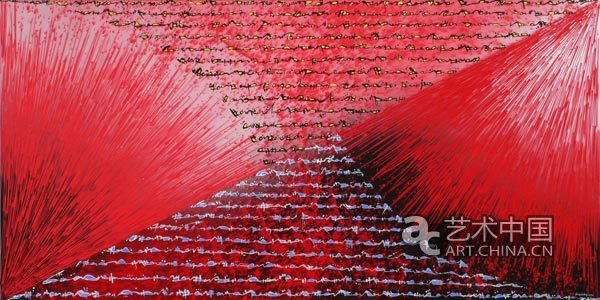“Our age is dominated by illusions and obsessions. The so-called prosperity can sometimes be deceptive. Modern man are spiritually lost and confused, so they are in relentless pursuit of material riches. Disasters in various forms all have something to do with our “puzzlement”. Due to puzzlement, most people do not know they have to awake, and there is lack of harmony between human beings themselves and between man and nature. It takes awakening to solve the problems and disasters we are facing. To stay in puzzlement or to stay awake, it depends on our will.” (Zhang Yongzheng)
In his latest works, the flow of lines in most of his works (implying movement in the universe, i.e., movement of life, also rhythm of life based on the eternal exchange between Yin and Yang) seems to be suddenly interrupted by a force from the world of chaos, producing the visual effect of the “Big Bang”, leading to strong visual and psychological uneasiness and turbulence. Here the underlying absolute stillness in his previous works is replaced by an overwhelming sense of unrest, evoking a sense of imminent disaster and peril. The great changes in Chinese society will probably influence the Chinese view of the universe. These works maybe considered a mirror of his personal reflections, and more importantly, revelation straight into his own aesthetic universe, heralding a new form of expressional language.
Someone pointed out that the greatest invention by Greek philosophers was to single out “nature” as being universe without man. The Chinese, though, saw man as inseparable from nature, as part of a whole. Much of Chinese philosophy is an inquiry into man’s struggle to find and maintain the balance. In the realm of art, Chinese Zhang Yongzheng is engaged in the same pursuit.

